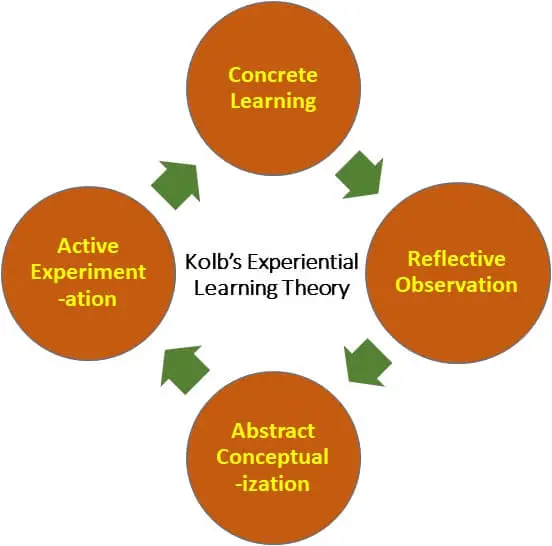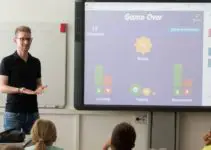What is the experiential learning model or 4-H teaching approach? This article describes this teaching approach, its components and processes. It also provides complementary teaching strategies that enrich the students experience particularly during the pandemic.
Among the teaching approaches that I have learned while attending a webinar during the early part of the COVID-19 pandemic, the Experiential Learning Model or 4-H appealed more to me than others. Hence, I used this teaching approach to prepare my asynchronous modules as part of the Blended Website Learning System I developed for my students.
Asynchronous Learning
The holding of online classes using asynchronous learning approaches appears to resonate with the students’ need to attain performance standards outlined in the course I teach. Asynchronous means “not happening simultaneously,” that is, I need not do the lectures as I conventionally do in face-to-face interactions in an actual classroom with my students.
I have to introduce the module to them briefly (less than one hour) using Zoom, open the module, and go through it, giving an overview of what to expect. While the module needs to be accomplished by the students at their own pace, unaddressed issues always arise. And the online sessions also present an opportunity to be flexible if students grapple with their internet connections to access the module and understand its contents. I follow up on their queries by making myself available for contact in my Messenger account.
After each session, I upload a recording to my cloud storage subscription. Thus, students whose internet connections are poor or get disconnected for some reason can still download the video and listen to what transpired during the session that day. They can always find an ideal place to establish an internet connection and download the teaching materials that I have prepared.
All of the enumerated required learning outcomes can be achieved, assuming that students have good internet access in their homes. Nevertheless, I advised them to find a good internet connection somewhere outside their home, in a safe place whenever they have the opportunity.
What is the Experiential Learning Model or 4-H?
The Experiential Learning Model or 4-H is a teaching approach founded on the idea that students learn through meaningful experience. This teaching approach characterized schools for more than a century. It is the foundation of teaching kids in the early 1900s.
The teaching process emphasizes the role of experience in learning. Students gain experience, reflect and learn something new from that experience (or obtain the knowledge and skills the teachers intended them to derive from that experience), and apply their knowledge and skills in new situations.
The Theoretical Foundation of the Experiential Learning Model
Teaching models like The Experiential Learning Model arose from meticulous research made by early researchers on how students learn. They do not arise from the simple musings of a person. Educational approaches originate from theories developed and popularized by well-known researchers like David Kolb.
Educators must be mindful of the way they impart knowledge and skills to their students. Hence, teachers must adopt at least one of the teaching models they can comfortably and efficiently apply in their teaching strategies. They don’t need to reinvent the wheel because researchers have already systematically studied how learning takes place.
So what makes the Experiential Learning Model stand the test of time? What is its philosophy?
Two Stages of the Experiential Learning Model
Kolb argues that students learn better if they go through two stages, namely 1) grasping an experience and 2) transforming that experience into something meaningful.
Grasping an Experience
Grasping an experience consists of two cycles: concrete learning and reflective observation.
Concrete Learning
Concrete learning takes place when a learner experiences something new, or derive something from a past experience, looking at it in a different perspective.
Reflective Observation
Reflective observation occurs when the learner ponders on the new experience, or a previous one, coupled with understanding so that they can proceed to the succeeding two cycles. Students think about the meaning of their experiences.
Transforming the Experience
The next two stages of the four-stage cycle of Experiential Learning Theory consists of abstract conceptualization and active experimentation.
Abstract Conceptualization
Abstract refers to something that exists as thoughts or ideas that prompts one to action. Of course, ideas do not have a physical or concrete existence, but things get done, or problems get solved through them (see post on how to generate ideas). Actions arise from our thoughts; unless, we do things without thinking.
But sane humans think before they act. To get things right, students must think before they do something to comply with the requirements of a given lesson.

Thus, abstract conceptualization entails the formation of new ideas that arise from their experience and reflections about it. Previous notions are dismissed or modified in favor of newer or better ideas in dealing with tasks.
Active Experimentation
In the fourth and last stage, students engage in active experimentation where they apply the new ideas to the situations they face related to the experience. It is at this stage that students apply what they have learned.
Active experimentation is where the learners apply the new ideas to the world around them, to see if any modifications are required. This process can happen over a short period or over a long time.
As the student goes through the cycle, effective learning takes place. Aptly stated, the theory espouses learning by doing. Repetition, or continuous practice of the desired skill, strengthens learning.
The following interesting video by Sprouts summarizes the Experiential Learning Theory explaining the model in technical terms but with hilarious cartoons.
5 Ways to Enhance Experiential Learning Online
I applied a little innovation to enrich the experiences of my students given the constraints of the pandemic due to COVID-19. They need to work on their lessons independently in the safety of their homes using the asynchronous modules that I have prepared at the early part of the pandemic.
I applied four online tools in facilitating online learning within and outside the instructional modules. I explain these approaches in the next section.
Within Instructional Modules
Virtual Tours Using Curated Youtube Videos
I teach environmental science subjects, so there is a need to expose my students to the natural world. But field trips are not possible during the pandemic. Thus, youtube videos on the biophysical environment are helpful. I just added links to relevant videos with a meticulous curation of their contents.
Curation is the process of selecting, organizing, and looking after the items that I have found on youtube. The curation process requires considerable time. I view and listen to the narrative content and assess its relevance. I need to ensure the quality of those videos to enrich students’ learning experiences. It is not just a link-and-go exercise but a time-consuming evaluation of the videos.
Zoom-Recorded Sessions
I make sure that I recorded the proceedings of each scheduled meeting. I saw the need to record these short sessions because some of the students lose their internet connection. I advised those who have intermittent internet connections to listen to uploaded short-session videos in the instructional website that I have created to host my instructional materials. I have very little feedback that they could not access those sessions.
The purpose of the short, zoom-recorded sessions is to orient the students on the overall structure of the instructional modules. The module shows the intended learning outcomes, the duration of instructional module accomplishment, and content following the Experiential Learning Model or 4-H structure. It ends with a question requesting their feedback to help improve the module.
Blended Website
Blended website learning, as the name connotes, combines different websites hosted in different platforms. It so happened that I can create websites using WordPress. In addition, I trained on how to use Moodle as a learning platform.
The WordPress website hosts my instructional materials, while the Moodle site serves effectively as an assessment site. More details on the Blended Website Learning System here.
Outside of Instructional Modules
Social Media: Facebook and Messenger
If students have other concerns not addressed in the modules, I encouraged them to contact me and post their queries in Messenger. To save time, I reminded them to read all my instructions first on the website where my instructional modules are uploaded. If they cannot find the answers there, or if they have difficulty accessing the materials, among others, they contact me directly.
This approach appears to be effective as students actively use the facility. It also helps me assess the situation of my students and respond appropriately to their issues and concerns.
For example, one student was not able to attend my classes because her father was critically sick. She has to keep watch. I can easily message her to find out how’s her situation.
The complementary online tools and systems mentioned in this article somehow alleviate the difficulty students experience due to the pandemic. Many of them desire to accomplish their academic works and upgrade their professional lives despite the constraint of home quarantine.
Everyone needs empathy during this critical time. A little consideration would help ease tension to those suffering from the impact of COVID-19.
Famous Practitioners of Experiential Learning
The Experiential Teaching Model is a nifty tool in the attainment of course learning outcomes. Learning through experience has been espoused by famous philosophers and educators.
Aristotle taught his students that learning takes place by perceiving reality first hand, analyzing those perceptions, and interpreting the properties of those realities through rigorous study. Anne Sullivan educated Helen Keller, who was then blind and deaf, by associating touch with objects surrounding her. Richard Feynman emphasized the application of physics and mathematics to understand how they work. And of course, Kolb popularized the idea.
Opening opportunities for students to experience and learn remains an effective teaching approach that stood the test of time. Its application during the pandemic through creative means in the realm of the internet is still possible as this article explained.
© P. A. Regoniel 1 June 2021


Thanks for sharing Dr Pat. This one is a good guide especially for newbies in online teaching like me.
Welcome Ayns. It’s great to know that you found it helpful.